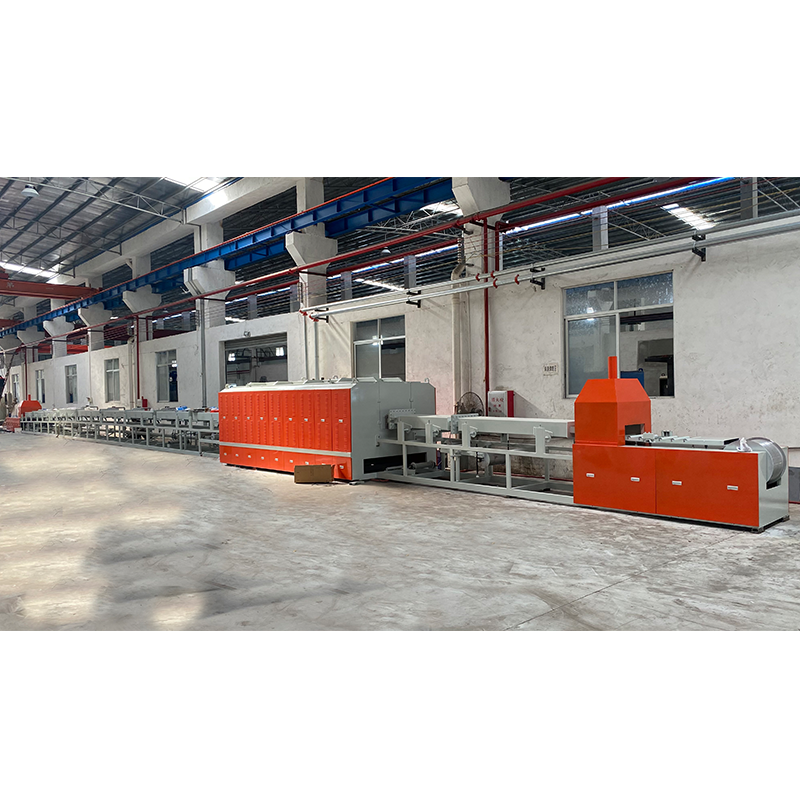Continuous Bright Quenching Process Flow
Apr. 17, 2025
1. Application: Mainly used for bright quenching of various martensitic stainless steels and bright annealing (solution treatment) of austenitic stainless steels. Products treated with this equipment exhibit a bright surface without oxidation or decarburization.
2. Working Principle: The non-oxidizing continuous heating furnace mainly consists of a main furnace, a cooling water jacket, a conveying mechanism, an ammonia cracking furnace, and a control device.
The main furnace is used for continuous heating and quenching operations. To prevent oxidation, workpieces pass through a high-temperature stainless steel furnace chamber filled with protective gas. The furnace chamber communicates with the inner cavity of the cooling water jacket, forming a straight "tunnel" through which workpieces are dragged by the conveying mechanism. They are first heated to high temperatures and then rapidly cooled, with the entire "tunnel" filled with protective gas throughout the process. An ammonia cracking furnace is used to supply gas to the main furnace system, where ammonia gas decomposes into a mixture of hydrogen and nitrogen (75% H2 + 25% N2) under high temperatures and catalyst action. After passing through a flow meter, the gas enters the furnace chamber to protect the workpieces from oxidation. At the tunnel entrance, the ammonia cracking gas is ignited and burned. The cooling system uses a water pump to input cooling water into the cooling water jacket to cool the workpieces.
The main furnace operates at temperatures ranging from 1000°C to 1150°C, with a maximum operating temperature typically of 1150°C.
3.The bright quenching process flow includes the following main steps:
Clean Surface: Ensure that the workpieces are free of foreign matter or oil stains before annealing to ensure the quenching effect.
Add Protective Gas: Introduce dry ammonia cracking gas into the quenching furnace to create an oxygen-free environment and prevent oxidation.
Heat: Determine the quenching temperature based on the stainless steel grade, generally at least 1050°C for martensitic steels.
Cool: Rapidly cool after heating to achieve a bright surface and hardness.
4.The objectives and advantages of bright quenching include:
Increase Work Hardening: Enhance the hardness of workpieces through high-temperature heating to obtain satisfactory metal structures.
Achieve Bright, Non-Oxidizing Surface: Obtain a bright, non-oxidizing surface after quenching.
Simplify Subsequent Processing: The bright-treated workpiece surface remains smooth, facilitating subsequent surface treatments. Some customers can obtain a bright surface without further processing.










